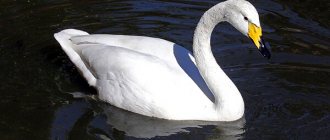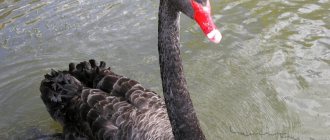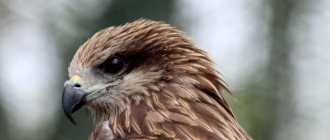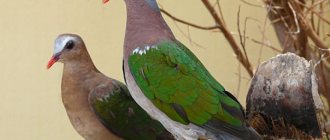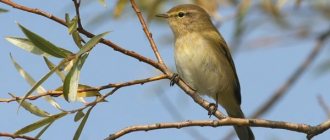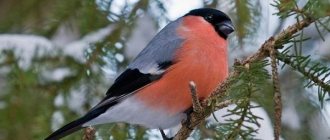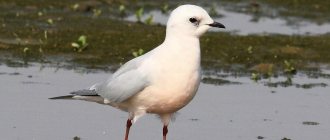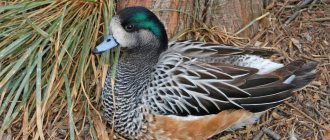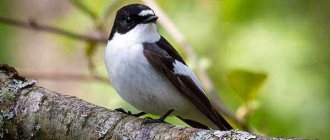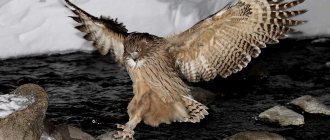Habitats
The mute swan is one of the largest birds in Russia. Its weight reaches 14 kg. It loves stagnant bodies of water with large thickets of semi-aquatic vegetation - cattails, lake reeds, reeds, sedges. Facts of its nesting in the Cheboksary reservoir and Trans-Volga lakes have been recorded. Distributed from southern Scandinavia and Central Europe to the Ussuri Valley, south to Asia Minor, Afghanistan, Iran. In winter, it migrates to the areas of the Caspian and Mediterranean Seas. Individuals living in the south do not fly away for the winter. This species is registered in seventy countries.
Lifestyle and social behavior
The mute swan spends most of its time on the water, but where it is not disturbed, the bird sometimes comes ashore. Swans settle both near fresh and salt water bodies. The swan always spends the night in remote areas of reservoirs on carpets of intertwined rhizomes of aquatic plants (rafts) and in reeds. It is moderately tolerant of other birds and sometimes settles near the nests of gray geese. It can form colonies or, conversely, settle strictly individually. If the bird is not disturbed, then mute swans stay near their nesting sites until the last possible opportunity, and fly away only when the water bodies are completely frozen. But, as a rule, departure occurs at the end of September - beginning of October in the north, and in October - November in the southern regions of the range. Mute swans winter on Lake Issyk-Kul and other large lakes in Central Asia, and also migrate from a number of places to the Azov and Black Seas, along the eastern and western coasts of the Caspian Sea far to the south and fly to North-East Africa, the Mediterranean, Turkey, Palestine, the Arabian Peninsula, Iran, Afghanistan, and even to Northwestern India. During migration, mute swans fly day and night and can be recognized by the special whistling sound of their wings. The flock flies in an oblique line, necks are stretched out, the cry in flight is muffled and hoarse.
During the winter they live in pairs, families, and sometimes in flocks. There, young four-year-old swans meet their partners and enter into marriage alliances for life. In warm places, mute swans can live sedentary lives. Like all birds, swans renew their plumage: old feathers fall out and new ones grow. From the second year of life, swans molt twice a year. In the summer, from about July to August, complete molting occurs. During the full summer moult, the flight feathers and wing coverts fall out, and the swan loses the ability to fly. At this time, the swans are taking care of the babies, so the loss of the ability to fly does not allow parents to separate from the babies due to anxiety. Then all the old small feathers fall out, but new ones grow at the same time. The flight feathers grow within a month, and the bird becomes able to fly again. The second partial moult occurs in the fall from early September to December, sometimes until January, during which a partial change of contour and tail feathers is observed. Just during the autumn molt, the swans fly away, and the molt begins in their homeland and ends in their wintering areas. The gray-brown color of the plumage completely changes in young swans to pure white only in the third year of life, and the swans become adults.
Mute swan: description
The large bird belongs to the duck family. The mute swan (an order of geese) is protected in many countries. The bird's body length is on average one hundred and sixty centimeters (including the neck), and the wingspan reaches two hundred and forty centimeters. The plumage is snow-white, with a light buffy coating on the neck and head. Adults have a bright red beak, frenulum, and a velvety bump under the beak. The legs are painted deep black.
A young mute swan has light gray plumage with a brownish tint. Its beak is gray-purple. The color of the plumage changes at about three years of age. These birds have thicker necks than other white swans. They keep it afloat in the shape of the letter “S”, effectively raise their wings and hiss intimidatingly (hence the name). Unlike their northern counterparts, they cannot make loud trumpet sounds.
Human influence on the bird population, whether the mute mute is in the Red Book or not
Also, many people are interested in whether this swan is listed in the Red Book or not.
In general, the species is not threatened, so the bird is not included in the World Red Book. But to local ones, related to specific regions of Russia - yes. These include: Sverdlovsk, Penza, Kirov, Chelyabinsk, Ulyanovsk, as well as the environmental book of the Republic of Bashkortostan.
Many swans become tame in the city
For a long time, the mute swan was hunted not so much for its meat, but for its valuable down - very light and warm. As a result, in some countries it has disappeared altogether. For example, in Belarus, the last individuals were exterminated back in the nineteenth century. Later they were brought from the Baltic states and the birds took root perfectly.
But still, since the 60s of the twentieth century, hunting them has been completely prohibited throughout the world.
Habitat and food
The mute swan prefers to create a pair in which it lives permanently. Birds nest on overgrown lakes. Having occupied a small body of water, the couple does not allow other birds into their territory. Nests are created in reed thickets. They are a large structure made of moss, reeds and grass. To build the bird, they use last year's reeds, to which they add a large amount of other plant material. The bottom of the nest is covered with its down and soft panicles of reeds.
The mute swan devotes a lot of time to arranging its home. What does this powerful bird eat? These are mainly fruits, green parts and roots of plants growing in a reservoir and on its banks. In addition, these are mollusks, small crustaceans, and worms. Sometimes in the summer, birds go to the steppes to feast on grain.
Story
Swans got their name “mute” because of their hissing in moments of danger.
These birds belong to the “Eurasian” species. Initially, they lived in Central and Northern Europe, England and the territory from Asia Minor to China. Since the end of the 19th century, mute swans began to be imported to America, Africa and Australia.
Since 1984, mute birds have been considered the national bird of Denmark.
Since the 15th century, only people with high social status could have mute dogs in England. Swans were ringed, which meant they had an owner. Now in England, hissing swans belong to the royal family.
Until the mid-20th century in Belarus and Lithuania, the number of these birds tended to zero. Only a ban on hunting helped restore the population. Now the total number of mute mutes on earth is 500-600 thousand individuals.
Reproduction, offspring
Birds reach sexual maturity by three to four years. The female lays 4-6 white or light yellow eggs. The incubation period lasts 35-38 days. The female incubates the offspring. At this time, the male protects his girlfriend, always being nearby. It should be noted that the mute swan has good paternal qualities. Many researchers have recorded interesting facts. When the female needs to leave the nest for a short time to get food for herself, the male takes her place. He is not afraid of any predators. With one blow of his powerful wing he is capable of killing a fox or breaking a man's arm.
The hatched chicks weigh approximately 200 grams. They are covered with thick gray down, barely dry, ready to leave the nest. However, at first they accompany their mother everywhere, sitting comfortably on her back. From the first hours of life, the chicks feed on their own; only at night do they return to the nest under the mother’s wing to keep warm. Both parents nurse the offspring.
At four months (sometimes a little earlier) the chicks begin to take off. From this moment on, they unite into large youth flocks. Under natural conditions, the mute swan lives 25-28 years.
During the breeding season, the mute swan is very aggressive. He fiercely defends his nest, mercilessly expels other birds and their broods from “his” pond.
Mute behavior in nature
Of course, when talking about the life of such an amazing bird, it is definitely worth talking about some of its habits, habitat and other subtleties.
Where does the bird live
In general, the mute mute initially lived only in Asia, as well as in northern Europe. And it was quite rare. But thanks to the activities of ornithologists, it became more widespread. So, it has taken root well in Australia, North America, and also in southern Africa.
For reference! Just a few years ago, experts found that its habitat in the north had expanded significantly - it now successfully nests in areas related to the Arctic coast.
What does it eat?
Birds are not too picky when it comes to food and will eat almost any food they can get. Therefore, their diet consists of both plant and animal foods. This includes grass and algae, small fish, shellfish, even lizards, newts and frogs. In pursuit of them, swans easily dive to a depth of up to 90 cm.
But during the molting period, they switch mainly to plant foods, eating up to 4 kg of plants per day. To gain enough strength before the long autumn flight, swans often focus on cereals, rich in carbohydrates and promoting the accumulation of subcutaneous fat.
When nesting, hatches chicks
Experienced ornithologists know when and how swans breed. But newcomers will be interested to know that the season begins around mid-to-late March. Males fight for territory, after which the female lays eggs - usually from 5 to 8 pieces.
Swans family on a walk
For reference! The hatched chicks can search for food and swim on their own within 24 hours, but their parents take care of them for several months.
It takes as much as 35-38 days to incubate. After this, for six months, parents take care of their offspring - they feed, educate, protect from predators.
Young swans become sexually mature at the age of 3-4 years.
Captivity
People have been keeping these snow-white powerful birds in captivity for a long time. When properly maintained, the mute swan does not suffer from this at all and does not strive for freedom. It easily adapts to new conditions, quickly creates a pair even with minimal choice, and reproduces successfully.
Before you buy swans for keeping, you must fulfill a number of prerequisites:
- organize a reservoir with clean water;
— provide winter housing for birds.
The pond can be of any size, but it is desirable that it be as large as possible. This makes caring for the birds easier. If there is one, then part of the problem is solved. In winter, you can install a compressor and pipes for pumping air and water. This creates a constant flow and the pond does not freeze even in severe frosts.
Some do it differently - they transfer birds from a large body of water to a winter room. Provided that there is a pool in which the water can be changed regularly, and a small clearing for walking with dry bedding, the birds will feel comfortable.
However, the most humane way to keep the swans in winter is to transfer the swans to a nursery that has all the conditions for winter keeping of birds with a guarantee of their preservation.
Lifestyle
The mute swan spends more time swimming in the water
The mute swan is included in the Red Books of certain regions of Russia and some countries. The thing is that in the recent past this bird was hunted, which had a negative impact on its population. Since the mid-20th century, hunting it has been strictly prohibited, but the birds still die swimming in polluted reservoirs with oil and fuel oil puddles.
The optimal factors for life are:
- proximity to bodies of water;
- dense vegetation where the swan hides from strangers at night;
- distance from their own kind: swans live in pairs, and carefully avoid large groups of birds and humans.
What do they eat
The mute swan can also eat small fish.
The main food is aquatic plants and small marine animals. They love shellfish, water burros, and crustaceans. They almost never eat on land, with the exception of storms or floods, when small sea animals are washed ashore.
Bread is detrimental to the life of a bird. It is better to feed it with pieces of carrots, cabbage, and a mixture of grain crops.
Features of behavior
Noise irritates the swan and makes it aggressive
By nature, this bird is quite aggressive and irritable. Does not like other birds or humans. Often, at the sight of strangers, it begins to flap its wings and hiss, driving it away from its territory.
This is a proud, arrogant creature that is almost impossible to tame. Likes to be in quiet, hard-to-reach places.
Diseases
This bird is susceptible to various diseases:
- Arthritis. Appears after injury or infection. The swan's temperature rises sharply and its joints swell. Because of the pain, the swan cannot move quickly.
- Inflammation of the coccygeal gland. It is very easy to recognize: the swan becomes dirty, the plumage darkens. The bird constantly touches the area under its tail with its beak and may hiss and wheeze from painful sensations.
- Salmonellosis. The bacteria enter the bird's body along with food, affecting the entire gastrointestinal tract. The swan refuses to eat, becomes lethargic and inactive.
- Leeches. Often the source of trouble is leeches, which birds pick up while swimming in water bodies. They parasitize in the beak or throat, causing discomfort. The swan becomes restless and anxious. He tries to get rid of leeches and often cleans his beak.
In order for the bird to remain healthy, it needs clean water in the reservoir, proper feeding, and avoidance of swampy reservoirs, where leeches often live.
Reproduction
Little chicks love to swim on their mother's back
Such swans reach sexual maturity late - only at four years of age. An excellent breeding season is mid to late March. The male looks after the female beautifully: he swims around her, spreads his wings, and does everything so that she notices him. He turns his head and if the female notices him, the swans intertwine their necks and spend all their time together.
When mating has occurred, the female begins to build a nest. At this time, the male makes sure that no one enters their territory. Swans prefer to go far from strangers, choosing places in dense thickets.
It is known that young birds that nest for the first time have only 2 eggs. Experienced females produce about 10 eggs, but on average the number of offspring does not exceed 5–6.
The female incubates the eggs herself, only occasionally being distracted by searching for food. After 35 days, the eggs hatch into offspring. From the first days, the cubs are completely independent: they can eat and swim, but their parents carefully monitor them, protecting them from danger.
Interesting Facts
Mute swans are quite intelligent birds with a good memory. They easily remember the one who offended them, and even after a few months they can take revenge on him. They are aggressive towards people only during the breeding season, protecting the clutch or chicks. Mute birds have excellent eyesight and hearing. Birds communicate with each other in an interesting language consisting of a large number of gestures and sounds. The body of an adult swan is covered with more than 23 thousand feathers. Individuals living in captivity often reach the age of thirty.
Animal in the Moscow Zoo
Mute swans have been kept at the Moscow Zoo for a very long time. These birds tolerate captivity well, live long and reproduce successfully. They, along with other species of waterfowl, can be seen on the zoo's Great Pond. In the zoo, swans build nests on the shore, trying to choose a secluded place for this. In the summer you can see how parent swans carefully look after their babies and do not let other birds or people get close.
Swans, like other waterfowl, are fed with mixed feed, millet, wheat, and oatmeal. Be sure to provide fresh herbs and vegetables: grated carrots and cabbage. Birds need cabbage because of its sulfur content, which promotes feather growth.
Swans tolerate winter well; with enough food, the birds do not freeze. In severe frosts, hay is laid out on the ice of the pond so that the birds can sit on the bedding rather than on the ice. They also put up small wooden fences where birds can hide from the wind.
Swans in myths and legends
In many countries, quite a few myths and legends are associated with the image of a swan, and the killing of a swan was condemned, punished, or promised great misfortune.
In Slavic beliefs, the main reason why a swan should not be killed was the identification of the bird with God.
It was in the form of a white swan that Belobog came to earth. If a person killed a bird, then punishment befell not only the killer, but also his entire family. Our ancestors also avoided the sight of a dead bird: a dead swan was a harbinger of death.
In India, there is a belief that one man became a swan and, flying into the sky, merged with the sun. The snow-white bird is sacred to the people of India. According to legend, it was the female swan who laid the egg from which Brahma was born. In many regions of the country, even today there is no worse act than killing a swan.
The Celts believed that swans were divine messengers and were able to heal people from a variety of diseases. And if you kill a swan, the whole family will be haunted by various misfortunes, diseases and death.
Swans occupied a special place in Greek culture. To destroy this beautiful bird meant angering the gods and was punishable by death.
